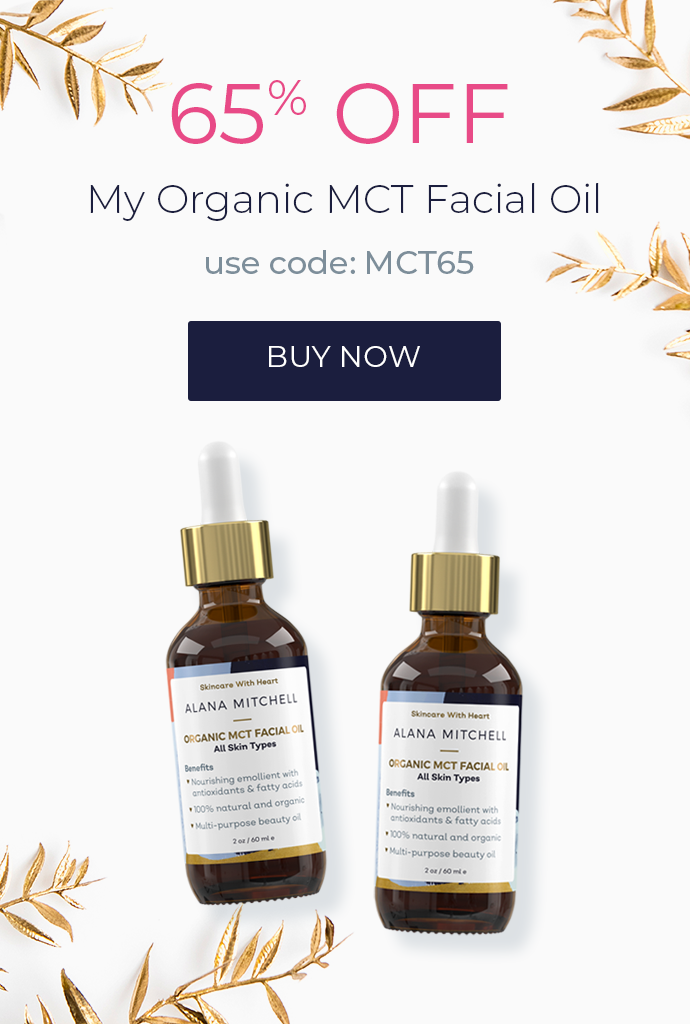What Should You Be Using In Your Skin Care Routine?
Take my quiz and get personalized recommendations from a
licensed esthetician!
What Are These Small Red Bumps on My Arms & Legs?
Hi, friends!
Have you ever noticed a bump (or bumps) on your skin and thought, "Hm, it doesn't hurt or look like a pimple...but what is it?"
Non-acne bumps on the skin are extremely common, but that doesn't make them any less annoying or confusing!
We may try to do some detective work of our own before making an appointment with our dermatologist.
Don't worry, though!
Today, I'm going to discuss one cause of little bumps that appear on the skin: keratosis pilaris (KP).

According to the stats, this is one skin condition that many of us may have had in the past (or dealing with right now).
Let's get to the bottom of this and figure out what it is!

What Are They?
Keratosis pilaris (AKA follicular keratosis) are harmless little red bumps filled with a protein called keratin, which is found in hair, skin, and nail cells.
The keratin builds up and creates a scaly plug that blocks the opening of hair follicles, which are located all over the body - besides the soles of our feet and the palms of our hands.
Usually, many plugs will form, forming areas of rough, bumpy skin.
To summarize: "It's a genetic condition where, for some reason, the follicles on the outer arms and thighs get clogged and don't naturally exfoliate," says Dr. Doris Day.
How to Identify
As the title of this blog states, keratosis pilaris is characterized by small red bumps that occur on the upper arms (which is the most common area to be affected) and the legs (particularly the thighs).
Your dermatologist will quickly be able to tell if you have the condition.
KP can also occur on the face (particularly the cheeks), the back, and the buttocks.
Some people may have more bumps than others.
KP is also referred to as “chicken skin” or "goose skin" since it appears like goosebumps that don’t go away.
The bumps may:
- Feel rough and dry, like sandpaper
- Appear skin-colored, white, pinkish-purple (on fair skin tones), and brownish-black (on dark skin tones)
- Itch and get irritated
- Become more noticeable during winter or in a dry climate
What's the Cause?
KP affects all ethnicities and can occur at any age, but it's more common in teenagers and children under the age of two.
The bumps usually go away by themselves during childhood.
However, hormones may cause a flare-up around puberty.
If a teenager develops KP, the bumps usually clear up by their late twenties.
Women are a bit more likely to have keratosis pilaris (boo!).
There are a few reasons you might find yourself living with these little bumps:
- Dry skin – keratosis pilaris is made worse when skin is dry, particularly if it’s due to low humidity or cold weather (I see you, winter). When your skin is dried out, it can overproduce keratin in an attempt to moisturize and protect itself. This process jams up follicles, causing ingrown hairs and irritation.

- Chafing – these bumps can get irritated and made worse by tight clothing that causes chafing. When possible, wear clothing that is loose and breathable. That’s right, you just got one more justifiable reason for rocking your favorite comfy clothes!
- Genetics – there’s also a genetic component, which means it’s pretty likely that someone in your family has KP and passed in on to you (thanks, Mom and Dad).
- Ichthyosis vulgaris - this inherited skin condition causes thick, dry, scaly skin.
- Asthma
- Eczema (atopic dermatitis)
- Allergies/hay fever
Different Types of Keratosis Pilaris
- Keratosis pilaris rubra - appears as red, inflamed bumps on the arms and legs.
- Keratosis pilaris alba - appears as rough, bumpy skin.
- Keratosis pilaris rubra faceii - appears as a reddish rash on the cheeks.
How to Treat and Prevent
While keratosis pilaris is harmless and doesn't necessarily need to be treated, we can improve our skin's appearance (and boost our self-esteem).
Dry skin is the main culprit of KP.
It can make the bumps more noticeable.
In fact, many people say the bumps go away during the summer - thanks to the increase in humidity - only to return in the winter.
If you live in a dry climate, you may see the bumps year-round.
While it seems like a good idea to exfoliate these bumps away, it may just exacerbate the problem.
As Dr. Elizabeth Tanzi explains, “People tend to over-exfoliate to get (the skin) smooth, and it just makes it worse, because it stimulates more bumps.”
Harsh exfoliants and cleansers can strip skin of natural moisture, and because KP is made worse when skin is dry, moisture is the name of the game.
I'm listing multiple treatment methods below.
You may need to try a few to find what works for your skin.

Moisturize!
Apply lotion or cream to your body every time you get out of the shower, while your skin is still damp.
I recommend using an oil-free formula so your pores won't become clogged even further.
Overall, you should be applying some form of moisture 2-3 times a day, or when your skin starts to feel dry.
Carry a small size with you in your purse, or leave one in your car or at your desk.
This way, it'll be easy to remember!
Use a facial moisturizer as part of your everyday skincare routine as well.
Superstar Ingredients
I recommend using moisturizing products that include active ingredients, such as:
- Alpha Hydroxy Acids (AHAs) - a group of natural acids found in foods used in skincare to remove the top layers of dead skin cells.
- Glycolic acid - gives skin a mild exfoliating effect, encourages cellular turnover, and gently removes the top layer of dead skin cells.
- Lactic acid - this is more gentle than glycolic acid to exfoliate to stimulate cell turnover and soften and improve skin texture.
- Salicylic acid - a beta hydroxy acid (BHA) that cleanses and unclogs pores by breaking up dead skin cells.
- Urea - a humectant that gently exfoliates and moisturizes the skin.
These ingredients will provide a mild exfoliating factor to keep follicles clear while moisturizing skin.
They're also helpful for treating acne, reducing the appearance of acne scars, and firming and smoothing skin.
You can also try formulas containing retinoids which will remove the top dead layers of skin and encourage new cell turnover and growth.
Since this ingredient is a little stronger, make sure to follow directions for use which will likely advise that you start by applying it just a couple times a week until your skin acclimates.
Women who are pregnant or nursing shouldn't use retinoids.

Exfoliate Wisely
As I mentioned above, make the bumps worse because people tend to overdo it.
However, gentle exfoliation can remove dead skin cells from the surface.
You can do this with a loofah or washcloth.
Start off with just once or twice a week, to be safe.
Please don't scrub!
Remove Hair With Care
Hair removal methods (shaving, waxing, creams) can irritate keratosis pilaris and make it appear worse.
KP can look like razor burn or ingrown hairs.
Below are some tips to help you have a more comfortable shave while minimizing the risk of irritating keratosis pilaris:
- Use a moisturizing shaving cream - this will help prevent nicks and cuts and soften the skin.
- Use a quality razor - change your razor blade after a few uses as it will have been exposed to bacteria. If you notice any sign of rust, a dull blade, or tugging of your skin, throw it away! Keep your razor in a clean, dry environment, like your medicine cabinet - rather in your shower, where the moist air encourages bacteria growth.
- Save the shaving for last - this allows time for your pores to open up and softens the hairs.
- Shave in the same direction your hair grows - AKA "shaving with the grain." This will minimize irritation and bumps.
- Take a break if you need to - if your KP is flaring up or has become irritated due to hair removal, take a break for a few days so it doesn't become angrier. If you want to cover up, pants are a good option. :)

Keep Flare-Ups at Bay
As you now know, the weather can have an effect on keratosis pilaris.
To prevent flare-ups, the tips below may help:
- Take shorter showers - limit your shower time to 20 minutes or less and use warm water. Standing there for long periods of time with hot water blasting will dry out your skin even further!
- Use a mild body wash - moisturizing ingredients, like shea butter, can prevent skin from drying out. Bar soap can be on the drying side.
- Apply self-tanner strategically - the color can make the bumps more obvious rather than hiding them.
- Use a humidifier - this puts moisture back into the air when things start feeling dry.
- Don't scratch - this will make the bumps more red and angry. If you're feeling itchy, use a formula with aloe or cortisone cream.
- Eat a healthy diet - foods rich in omega-3s will keep skin cells healthy. Avoid processed foods, fast food, high in fat and saturated oils.
See Your Dermatologist
Many people don't seek treatment for keratosis pilaris and find that it just goes away with time.
This can happen gradually (over a couple of years).
Others try home treatment - like the methods I mentioned above - and don't see any results.
It's just plain luck!
If you think your KP is particularly stubborn, see your dermatologist.
They can help you with a treatment plan and may even recommend some in-office procedures, such as:
- Extraction - a sterile needle or blade is used to create a small opening in the keratin plug, which is then removed by a tool called a comedone extractor.
- Chemical peels - acids are applied to the skin that cause it to exfoliate and eventually peel off, revealing the new layer underneath.
- Microdermabrasion - a machine with a tip made of diamond or fine crystal is used to remove dead skin cells. Some machines may use a suctioning function that vacuums the skin.
- Laser or light treatments - machines such as pulsed light devices will reduce the swelling, redness, and discoloration associated with KP.
Product Roundup
These products contain the active ingredients I mentioned earlier in this post.
If you have KP, they're worth giving a try!
Alana Mitchell Brightening & Exfoliating Anti-Aging Masque
Jan Marini Bioglycolic Hand and Body Lotion
Epicuren Kukui Coconut After Bath Moisturizer
Skin Script Clarifying Toner Pads
Image Skincare Clear Cell Salicylic Clarifying Tonic
Final Thoughts
Even though tiny red bumps on the body aren't painful, their appearance can be embarrassing and can and even cause worry.
It's easy to become self-conscious about different skin conditions, but I say - don't let them distract you from your beautiful self!
You're not alone, either - keratosis pilaris is something that many of us have.
Don't be afraid to ask your dermatologist for help!
Have you dealt with keratosis pilaris before? What was your experience? Do you have any questions for me? Share with us in the comments!
Top Brands
New Brands

Recent Posts

Are You Taking the Right Steps to Care for Your Skin?
Take the Quiz
Skincare Secrets!
10-step guide for healthy, beautiful skin after kids.
100% privacy. I will never spam you!



















